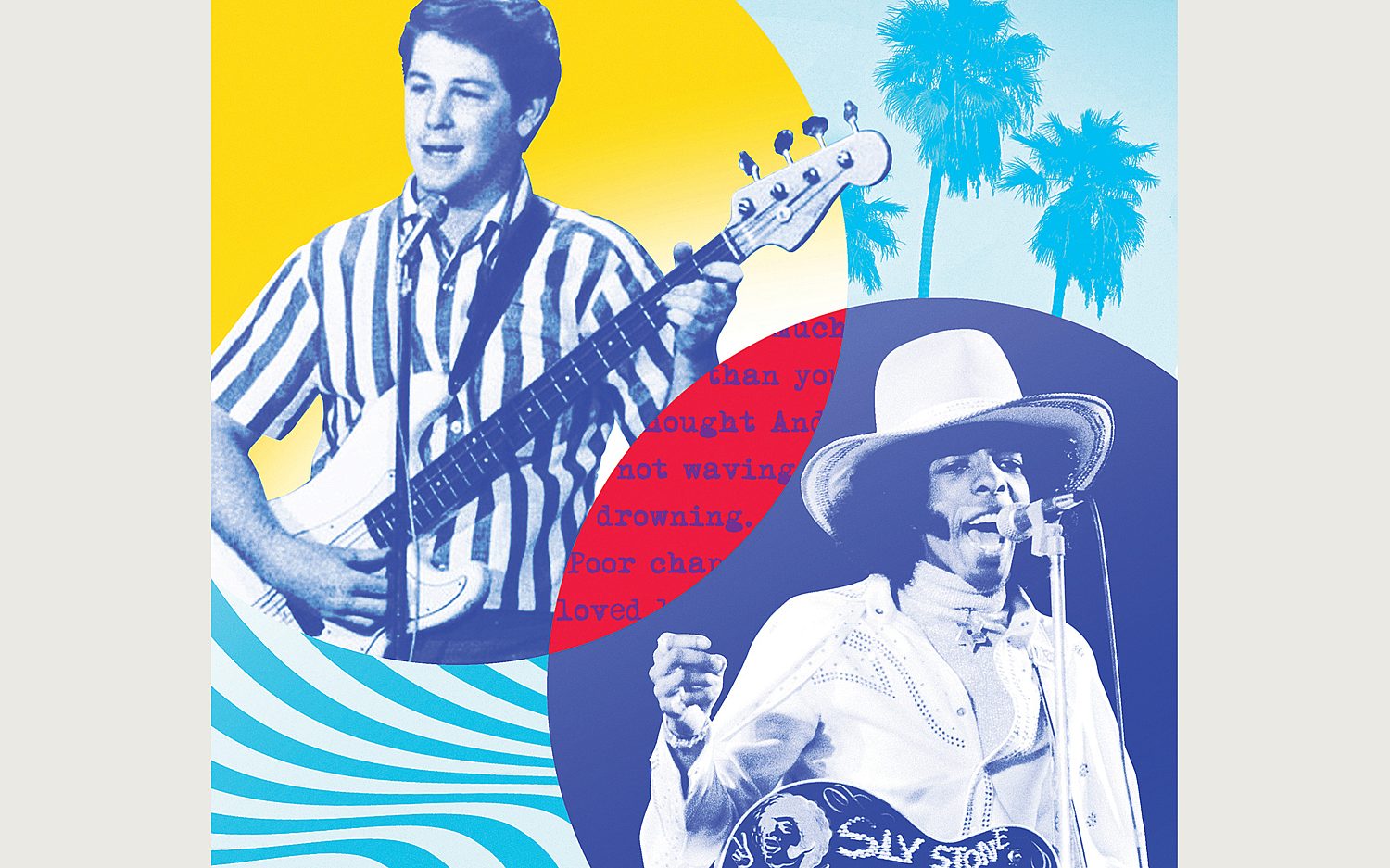Remembering surf music and psychedelic soul
MUSIC | The lives of Brian Wilson and Sly Stone
Brian Wilson (left) and Sly Stone Illustration by Krieg Barrie (Wilson: CBS via Getty images; Stone: Michael Putland / Getty Images

Full access isn’t far.
We can’t release more of our sound journalism without a subscription, but we can make it easy for you to come aboard.
Get started for as low as $3.99 per month.
Current WORLD subscribers can log in to access content. Just go to "SIGN IN" at the top right.
LET'S GOAlready a member? Sign in.
Because they were musical geniuses and because they died in the same week at the same age (82), it’s not surprising that the Beach Boys founder Brian Wilson and the Sly & the Family Stone founder Sylvester “Sly Stone” Stewart are getting Venn diagrammed. What is surprising is the how big the middle part of that diagram is, considering that the two were seldom discussed in tandem while they lived.
But first some differences. The joyfully explosive “psychedelic soul” that made Sly & the Family Stone stars in the United States (they pretty much whiffed abroad) was rooted in soul, black gospel, and funk. The radiant sunshine pop that made the Beach Boys stars worldwide was rooted in the Four Freshman, Chuck Berry, George Gershwin, and Phil Spector.
Also, whereas Stone never regained his footing after succumbing to drugs, Wilson did. By the mid-’90s, he’d remarried, hooked up with the Wondermints, and resumed touring and recording. In 2004, he released, to widespread critical acclaim, Brian Wilson Presents Smile, a new version of the ambitious Smile album that he’d begun making in 1966 only to abandon it a year later.
But the silver lining of Smile’s belated success had a dark cloud. Namely, it cast into relief the sad fact that Wilson hadn’t composed much genius-worthy music in the intervening decades. In fact, his entire genius period, from “Surfin’ Safari” to “Good Vibrations,” covered a mere four years, the same amount of time, coincidentally, that it took Sly Stone to go from “Dance to the Music” (1967) to “Family Affair” (1971).
Saddest of all is that both Wilson’s and Stone’s genius periods ended for the same reasons: the continuous pressure to surpass their previous musical accomplishments and the drugs that promised them respite only to lay waste their desire, their confidence, and their ability.
Yes, Wilson was able to function again, sometimes very well, but he himself admitted to being “permanently damaged” by LSD. He released his last album of new material, No Pier Pressure, in 2015 and toured for the last time in 2022.
Stone released several albums after 1973, but neither they nor their singles made an impression. During his last 50 years, he mainly made the news for being broke, homeless, or unreliable. “Look at Mr. Stewart!” went a line from his 1968 hit “Life.” “He’s the only person he has to fear!” It foreshadowed a lot.
But perhaps the most striking similarity is that despite the exuberant positivity of Wilson’s and Stone’s biggest hits, the albums considered their masterpieces—Pet Sounds and There’s a Riot Goin’ On—are moody, introspective, and at times discomfiting in their vulnerability. In retrospect, they find Wilson and Stone, as the poet Stevie Smith might’ve said, not so much waving as drowning.
Or if that poetic allusion seems inapt, maybe this one from William Carlos Williams will do: “The pure products of America / go crazy.” Rest in peace.


Please wait while we load the latest comments...
Comments
Please register, subscribe, or log in to comment on this article.